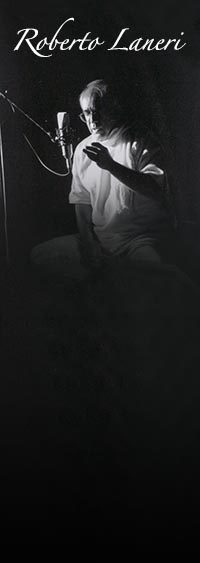Roberto Laneri
Compositor
DREAMTIME PROJECT
A concert for voices, instruments and images by Roberto Laneri, Ilaria Drago e Alberto Tessore.
Texts by Ilaria Drago, music by Roberto Laneri, multivision by Alberto Tessore, prologue: Mara Cantoni.
“White man got no dreaming!” is a popular saying of the Australian aborigines. It does not mean whites do not dream, rather that their connection with the Dreamtime has gotten weak. Among the results, the loss of dreaming power,the creative power of a non-sequential state of consciousness. An ancient story tells of human races for whom dreaming was the real experience, whereas the waking state was much less productive and creative. According to some, the Australian aborigenes are among the last representatives of those ancient cultures, keepers of a knowledge whose origines and modalities on one hand escape us, while on the other hand vibrate in the deepest layers of our being. Dreamtime Project is a multimedia show whose starting point is a musical idea both new in its formulation and referring to proceedings and atmospheres of Australian aboriginal music, which goes back to thousands of years. This culture is not only fascinating, but very up to date, given our planet’s distressing state, in fact so much so to possibly becoming a strong point of reference and cultural icon of our time. Multimediality is intended as creation of an original art form, rather than a collage of various languages. Music makes use of both very ancient means (the techniques of overtone singing; the didjeridoo, the voice of the Dreamtime itself and archetype of wind instruments also belonging in the show: clarinet, bass clarinet, soprano sax) and contemporary technology (sampling, recording and sound manipulation techniques), gates of access to otherwise closed worlds, provided one listens in an open mind, unconditioned by cultural factors. The word slips and appears among the folds of the musical/visual texture, bringing with it the actress’s very body.The text has been written in a state of uninterrupted listening, not only to the music but to one’s own dreaming state; it has become pregnant with vibrations and allusions, tense nerves or delicate, sweet sensuosness. The whole text becomes a distant echo, in which the story-teller flies over his own meaning: a peculiar form of recitation, which freely incorporates various overtone singing tgechniques. The images, distributed on various screens, create a mythical space surrounding the audience. Within this space, multivision windows open up, fragments of traditional paintings, mythological elements and daily life as well. The goal is to show the invisible, dissolving each object in the vibrations which constitute its reality. In other words, what aboriginal art has been doing for thousands of years with the techniques known as raark, a sort of ancestral divisionism which highlights the energy forms over the exterior shell of things.
Roberto Laneri
©2018-2024
